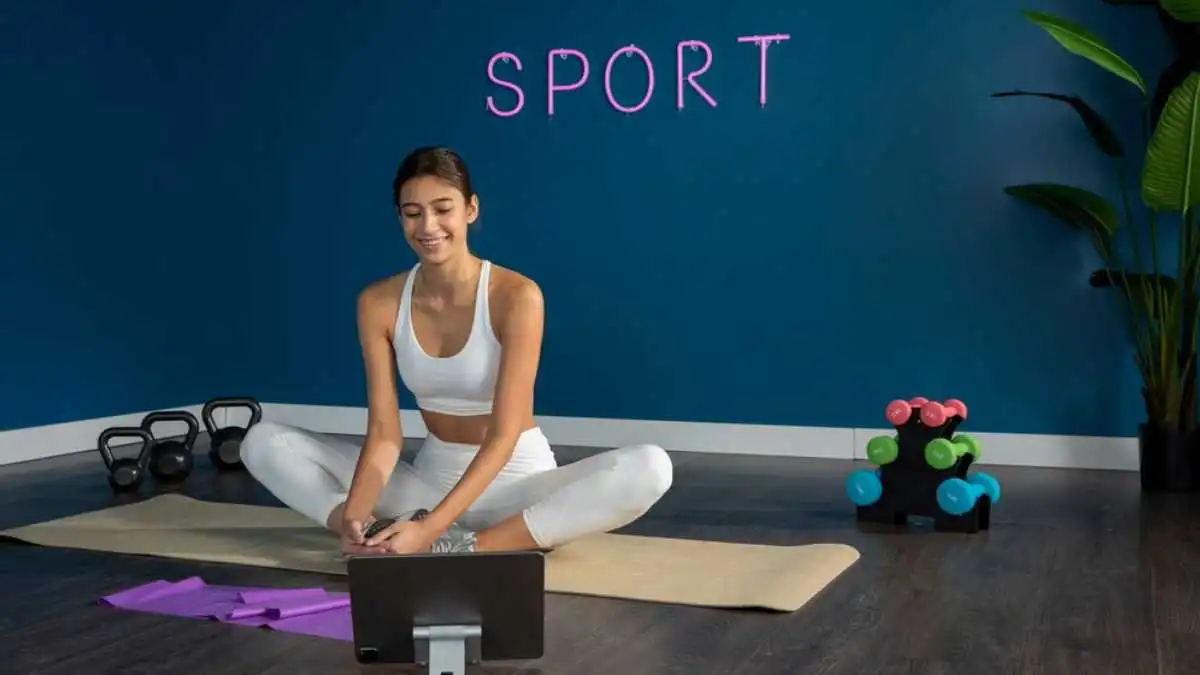YOGA
7 Post-Yoga Recovery Tips for Better Flexibility

Yoga isn’t just an exercise; it’s a journey towards a more flexible and mindful you. After a fulfilling yoga session, the body is ripe with energy and possibility. The key to enhancing your flexibility doesn’t stop on the mat.
Embracing the right recovery practices can significantly boost your flexibility. You can extend the benefits of yoga far beyond the class by integrating thoughtful recovery habits into your routine. This attention to recovery can redefine how your body moves and feels, enriching your yoga experience and encouraging a deeper connection with your own well-being.
Table of Contents
1) Stay Hydrated with Electrolytes
After a yoga session, replenishing lost fluids is crucial. It’s not just about drinking water; adding electrolytes can make a significant difference in your recovery and flexibility. Electrolytes are essential minerals such as sodium, potassium, and magnesium that help regulate fluid balance in your body.
Drinking electrolyte-rich beverages can aid in muscle function and prevent cramps, making your post-yoga experience more comfortable. Options like coconut water or electrolyte tablets dissolved in water are great choices. These provide essential minerals without unnecessary sugars or additives.
Hydration with electrolytes helps maintain energy levels. Post-yoga, your body needs to restore what was lost during the exercise. Ensuring an adequate intake of electrolytes supports this process, enabling you to maximize the benefits of each session.
Another simple way to increase your electrolyte intake is by consuming a snack that contains natural salts, like a small handful of almonds or a piece of fruit. Integrating these nutrients can make a noticeable difference in how your body feels and recovers. Prioritizing electrolyte-rich hydration can transform your yoga journey, improving both recovery and overall wellness.
2) Drink Sheng Pu Erh Tea for Digestion and Relaxation
Drinking Sheng Pu Erh tea after your yoga routine can offer multiple benefits. This fermented Chinese tea is known for aiding digestion. After a yoga session, drinking a warm cup can help your body break down the food you consume more efficiently, promoting a balanced digestive system.
Sheng Pu Erh tea is not only about digestion; it also provides a calming experience. The soothing effects of this tea can enhance your relaxation, which is essential after an intense yoga session. The gentle caffeine content boosts your energy without the jitters common with other caffeinated beverages.


The earthy, mellow flavor of Sheng Pu Erh makes it a delightful choice for tea enthusiasts. The ritual of brewing and sipping the tea can serve as a mindful practice, aligning well with the meditative essence of yoga. Enjoy it warm to truly appreciate its complexities and benefits.
3) Add Gentle Stretches After Practice
Applying gentle stretches after yoga can enhance your flexibility. This helps to gradually cool down your muscles, making it easier to maintain and improve your range of motion.
Being focused on areas that feel tight or overworked can address tension effectively. Consider including stretches targeting the hips, shoulders, and back, as these are common tension spots.
These post-yoga stretches can also support better alignment and posture. Gently lengthening the muscles creates space within the body, helping to promote relaxation.
You don’t need a long session; even five minutes can be beneficial. It also promotes mindfulness, allowing you to deepen the connection with your body.
The goal is to be gentle and mindful of your limits. Avoid pushing too hard, as the intention is to ease into each stretch comfortably. Enjoy the process of nurturing your body.
4) Use a Foam Roller to Relieve Muscle Tension
Using a foam roller in your post-yoga routine can be incredibly beneficial. Foam rolling targets areas of muscle tightness, helping release tension and promote flexibility. It’s a simple yet effective tool that can enhance your routine.
When using a foam roller, focus on the tight spots that need extra attention. This action helps promote better blood circulation to the muscles you worked during your yoga session.
To get started, take a few deep breaths and slowly roll the foam roller over the targeted muscle areas. Apply gentle pressure, pausing on any particularly tender spots for a moment. You should aim for three to five minutes in each area.
5) Refuel with a Protein-Rich Snack
After your yoga session, replenishing your body with a protein-rich snack can support muscle recovery and enhance flexibility. Consider foods like Greek yogurt, nuts, or a smoothie with protein powder. These options offer a convenient way to fuel your body.
Protein helps repair and build muscle fibers, which may lead to improved strength and flexibility over time. Choose snacks that combine protein with carbohydrates for an energy boost. A well-balanced option could be apple slices with almond butter.
Integrating a protein-rich snack into your post-yoga routine supported your body’s needs and helped ensure you’re ready for your next session.
6) Practice Mindful Breathing Techniques
Practicing mindful breathing in your post-yoga routine can significantly enhance your flexibility journey. Focus on deep, conscious breathing to release tension accumulated during your exercise. Each inhalation and exhalation should be slow and intentional.
You can try alternate nostril breathing, which helps to balance your energy. This technique involves closing one nostril, inhaling through the other, and then switching sides. It calms the mind and increases awareness of your body.
Box breathing is another effective technique. Breathe in for a count of four, hold for four, exhale for four, and pause for four. This rhythmic pattern aids in calming the nervous system and promotes relaxation.
Mindful breathing is not just about technique. It is about being present. Pay attention to how each breath feels moving through your body. This attention can translate into greater flexibility, as the body tends to relax more when the mind is calm.
Including this regularly to see improvements in both mental clarity and physical flexibility. Whether you’re in a yoga studio or at home, mindful breathing is a versatile tool you can use anywhere.
7) Get Enough Sleep for Muscle Regeneration
Adequate sleep plays a crucial role in your body’s recovery process after yoga. During sleep, your muscles undergo repair and growth, which supports better flexibility and resilience. Prioritizing a good night’s sleep can make a significant difference in how you feel and perform during your next yoga session.
Aim for seven to nine hours of sleep each night. This duration gives your body enough time to rest and regenerate cells, enhancing muscle recovery. Establishing a regular sleep schedule helps maintain a consistent sleep pattern, benefiting both your body and mind.
Creating a calming bedtime routine can improve sleep quality. Activities such as meditation, gentle stretches, or reading a book can signal your body it’s time to wind down. Avoiding screens and heavy meals before bed promotes better rest.
Your sleep environment also affects the quality of rest. Ensure your bedroom is dark, quiet, and comfortably cool. Investing in a good mattress and pillows can provide the necessary support for a restful night.
Prioritizing sleep contributes to overall wellness, ensuring you wake up refreshed and ready for your next yoga session. When your body is well-rested, it might surprise you how much more flexible and energetic you feel.
Consider sharing these techniques through videos to inspire others on their post-yoga recovery journey. Using a video editor, you can create engaging content that visually demonstrates each recovery tip in action, from mindful breathing exercises to using a foam roller. Whether you’re sharing on social media or creating tutorials, videos make it easy to connect with and inspire fellow yoga enthusiasts.
-



 GENERAL1 month ago
GENERAL1 month agoUncovering the World of кинокрадко: The Dark Side of Film Piracy
-



 GENERAL4 days ago
GENERAL4 days agoUnveiling the Art of преводсч: How Translators Bridge Language Barriers
-



 GENERAL1 month ago
GENERAL1 month agoThe Journey of iamnobody89757: From Anonymous User to Internet Sensation
-



 YOGA8 months ago
YOGA8 months ago4 Person Yoga Poses for Beginners


















